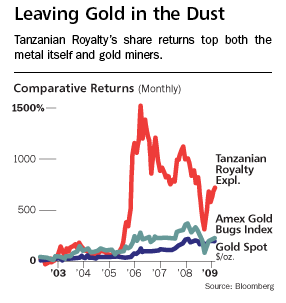Next Level
JF-Expert Member
- Nov 17, 2008
- 3,153
- 176
Thanks kwa kuweka hii report hapa!
Nimeipitia kwa haraka haraka ila kuna vitu huku ndani vimenistua kidogo;
1) Hii (Tanzania Royalty Exprolation Corp) ni kampuni iliyosjiliwa kutafuta madini (hopeful), sasa huko kwenye report, hizo picha za simba, twiga, mbuga na mito zinatumika kivipi hapa? au imekuwa contracted kufanya marketing ya tourists attractions zetu, kama si hivyo kwa nini huyu aruhusiwe kuweka hivyo vitu kwenye report yake anayo impresent huko Canada? Kumbuka kulikuwa na tangazo la kibiashara la ATCL /SAA lilikuwa na rythm ya wimbo wetu wa taifa watu walilipigia kelele hadi tangazo hilo likaondolewa, how about this?
2) Niko curious kidogo on some numbers kwenye report hiyo! Sisi kama watanzania, kampuni yoyote haitakuwa na faida kabisa kama haina mchango kwenye uchumi wa taifa hili through, kodi, ajira, market for our domestic products ect.
Sasa ukiangalia ukurasa wa 36 wa report hii utaona wanazungumzia report ya Kodi ya mapato (income taxes) ambapo wanasema kampuni hii itakuwa na income tax losses mpaka mwaka 2028 ndipo ambapo a cummulative tax losses of US$8,584,000 zitakapo expire! ikiwa na maana, hawa hii kampuni haitalipi corporate tax till mwaka 2029, hopeful! Mh Zitto, umeipata hiyo? Sasa kampuni za aina hii zinafaida gani kwetu? Wakati wenyewe wanajisia kuwa wanaasset nyingi huko Lake Victoria Green Stone Belt na Kabanga Nickel Belt, n kwa manufaa ya nani...kama hawalipi kodi?
Nimeipitia kwa haraka haraka ila kuna vitu huku ndani vimenistua kidogo;
1) Hii (Tanzania Royalty Exprolation Corp) ni kampuni iliyosjiliwa kutafuta madini (hopeful), sasa huko kwenye report, hizo picha za simba, twiga, mbuga na mito zinatumika kivipi hapa? au imekuwa contracted kufanya marketing ya tourists attractions zetu, kama si hivyo kwa nini huyu aruhusiwe kuweka hivyo vitu kwenye report yake anayo impresent huko Canada? Kumbuka kulikuwa na tangazo la kibiashara la ATCL /SAA lilikuwa na rythm ya wimbo wetu wa taifa watu walilipigia kelele hadi tangazo hilo likaondolewa, how about this?
2) Niko curious kidogo on some numbers kwenye report hiyo! Sisi kama watanzania, kampuni yoyote haitakuwa na faida kabisa kama haina mchango kwenye uchumi wa taifa hili through, kodi, ajira, market for our domestic products ect.
Sasa ukiangalia ukurasa wa 36 wa report hii utaona wanazungumzia report ya Kodi ya mapato (income taxes) ambapo wanasema kampuni hii itakuwa na income tax losses mpaka mwaka 2028 ndipo ambapo a cummulative tax losses of US$8,584,000 zitakapo expire! ikiwa na maana, hawa hii kampuni haitalipi corporate tax till mwaka 2029, hopeful! Mh Zitto, umeipata hiyo? Sasa kampuni za aina hii zinafaida gani kwetu? Wakati wenyewe wanajisia kuwa wanaasset nyingi huko Lake Victoria Green Stone Belt na Kabanga Nickel Belt, n kwa manufaa ya nani...kama hawalipi kodi?

